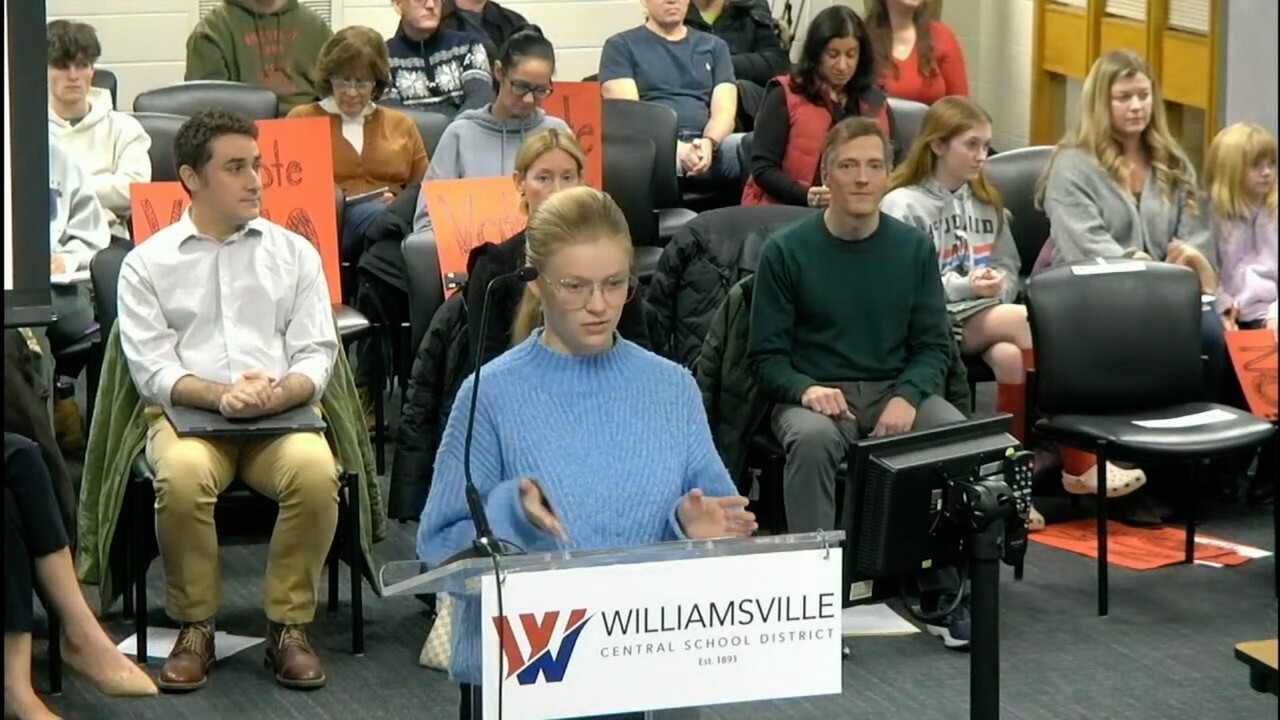AMHERST, NY (WKBW) — After months of discussions, the Williamsville Central School District’s proposal to alter school start and end times was ultimately not brought to a vote at Tuesday night’s school board meeting.
The proposal, which had sparked ongoing controversy among parents and students, failed to gain enough support.
Many parents and students showed up to voice their concerns and oppose the change. During the meeting, one parent made a strong statement, saying, “Let’s try not to fix something that isn’t broken.”
Another added, “This is not a change that is wanted or needed, and you need to put it to bed.”

One of the key points raised by parents was the potential negative effect on elementary students, particularly concerning their sleep schedules. Meanwhile, high school students also voiced their worries, noting how later start times could interfere with after-school sports and jobs.
A student expressed, “And ending our school day at 3:40 will push back my athletics...and therefore push back when I can start working.”

Williamsville Superintendent Dr. Darren Brown-Hall responded to the decision, acknowledging the significant pushback from the community. He stated, “At this present time, this will not be revisited.”
Reflecting on the feedback, Dr. Brown-Hall commented, “I’m not surprised about the push-back. We always get pushback when we’re trying to affect any type of change. But this is the reason why we instituted the comment period so we can hear from our community...Right? We are part of a team...We are a Williamsville team.”

In contrast, the Sweet Home Central School District’s school board approved a proposal to adjust start and stop times for the upcoming school year, despite a close vote. Sweet Home Superintendent Michael Ginestre expressed optimism about the changes.
“We’re excited about the possibilities and the opportunities this opens for our students,” he said.
Ginestre explained that the two main factors driving the change were to add an additional 15 minutes of instructional time for students and to address the ongoing school bus driver shortage.
“Even with this change, the driver shortage isn’t going away. For the past three and a half years that I’ve been in the district, we have talked about the driver shortage, tried to address it,” he said.

Starting next year, Sweet Home students will see a six-minute earlier start time at the high school, beginning at 7:19 a.m., compared to the previous 7:25 a.m.. The more significant change, however, will be at the middle school, where the start time will move from 8:55 a.m. to 7:40 a.m., aligning it more closely with the high school schedule.
Ginestre noted the adjustment to middle school schedules was a major shift, “Six-minute difference at the high school. The big change is at the middle school. We’re moving the middle school more in line with the high school. So the middle school right now starts at 8:55, they’re gonna start at 7:40 next year, and that’s a significant change.”

Despite the decision, Sweet Home has faced pushback from parents. Ginestre revealed that he received over 60 emails expressing concern, mostly regarding how students in grades 6 through 12 will now ride the bus together.
He acknowledged that the decision was a tough one and that it would impact everyone in the district, but emphasized that the district has been discussing and preparing for this change for over a year and a half.
“We worked really hard with teachers to prepare for this change,” Ginestre concluded.
As Sweet Home prepares for the new school year with adjusted start times, both districts continue to grapple with the complexities of balancing community feedback, student needs, and logistical challenges.



